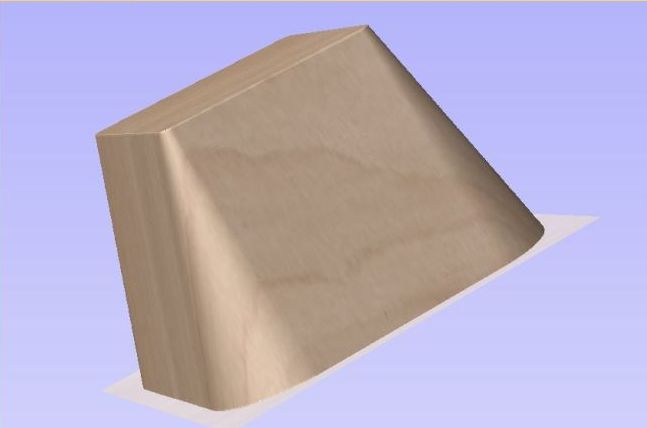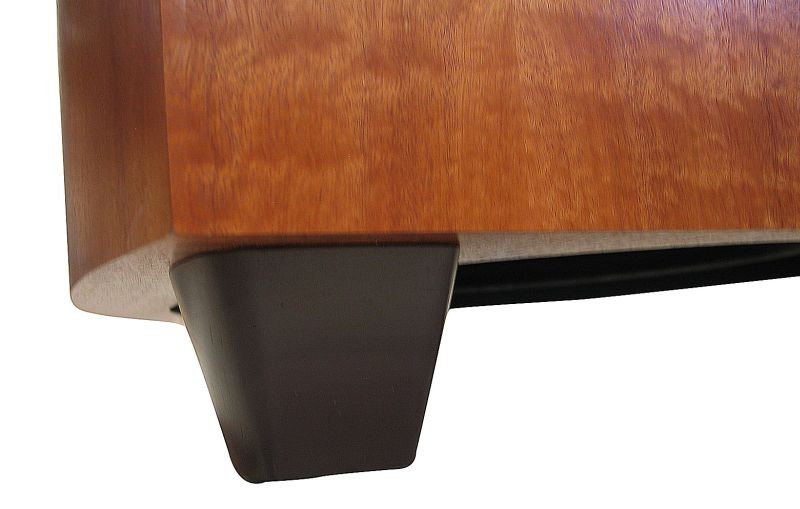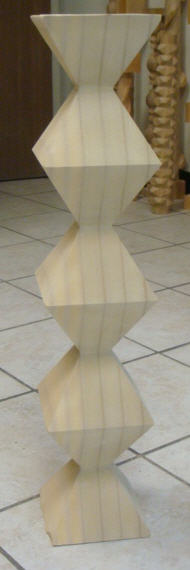Question (WOODWEB Member) :
I've been making these poplar feet by hand, using a horizontal belt sanding machine set at 15 degrees tilt. I attach a wood handle to the top of each foot, otherwise it's quite dangerous to do, holding the piece against a stop up close to the belt. If the picture doesn't quite show it, the top of the foot is an 'apple' shape, about 5" across and 2-1/2" tall.
I'm in need of enough of these now that I think it would make more sense to have a CNC machine involved. I contacted a local CNC machine shop and sent examples of the feet to them to look at. This is what I received for a response: "I can't come up with a practical approach to carving these on the CNC. The best I can do is about $20/each. That is for cutting labor only." It's not the price, necessarily, that has me concerned, it's that I suspect I will not get a good finished product from this shop. I asked if he knew of other shops here in Maine that could make these, perhaps with a more advanced machine, and here's what he said: "I sent the file to the few people I knew in the industry that I thought could help and they came back with similar machine times."
I'm not getting much information from this person, so I think I need to move on to a different shop. First I wanted to ask here about the difficulty involved in cutting these feet, and if I can expect to get a finished product from a CNC machine. Any feedback and/or ideas on which direction I should go with this would be great.

Forum Responses
(CNC Forum)
From contributor R:
A five axis router with a long bit will make a final cleaning pass around the foot to make a clean cut. The roughing cuts will be the time hog on the run. If you would bandsaw them to within an 1/8" it could be run in two passes. It will require some minor fixturing, but it could be held down with a single bolt through the center. I can't quite make out the transition at the floor. If that is just broken with sandpaper, no problem. If a machined radius, more CNC work.

One of the things I'm mindful of is that with CNC work, I still will probably have to do some work to these pieces after I get them back, like finish sanding, possibly drilling, etc. Also, there is the delivery and pickup (or shipping), correspondence back and forth, unexpected issues. For me there is a burden with doing this that is not there when I simply take some wood and go make feet. That's why I said it's easy work. It's just work and in the end it's a half hour a piece. At my current shop rate of $60 per hour, with materials the cost is $31 per foot. High yes, but my life is simple with this method! I guess what I'm saying is I think CNC or turning is a good option for these feet, but changing to a different process has the potential to be problematic, still time-consuming, and in the end not save any money or perhaps even cost more in terms of time and actual cost. The attached picture is of a different foot that is the same shape but a bit smaller around, and 3-1/4" tall.

